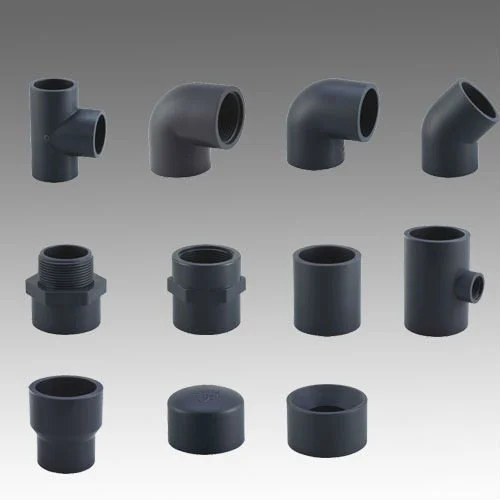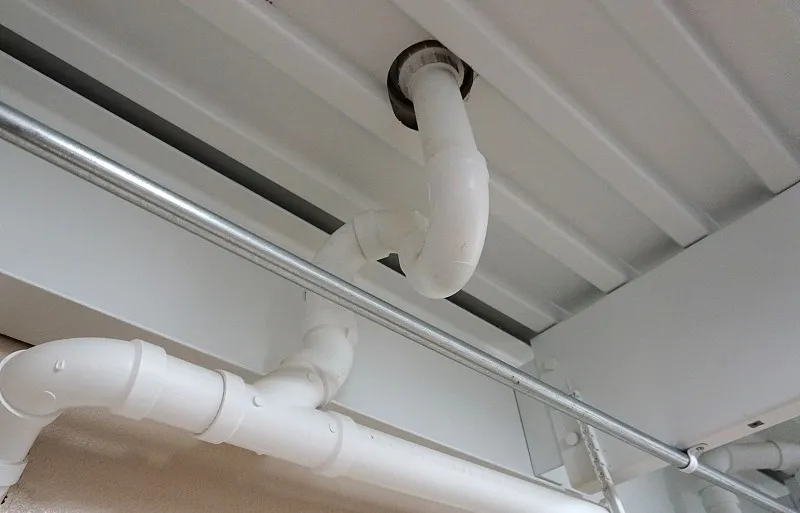
Schedule 80 Grey PVC Pipe and Fittings
Schedule 80 grey PVC pipes and fittings are becoming a go-to choice for many construction and plumbing professionals. Why? Because they offer a unique blend of durability, strength, and versatility. In this article, we’ll delve into everything you need to know about these essential components.
What is Schedule 80 Grey PVC Pipe?
Schedule 80 grey PVC pipe is specifically designed for high-pressure applications. Its thicker walls compared to Schedule 40 make it ideal for handling demanding tasks. But what exactly sets it apart? The thicker walls mean it can withstand higher pressures, making it a safer option for critical systems.
Benefits of Using Schedule 80 Grey PVC Pipe
One of the ultimate benefits of Schedule 80 PVC is its durability. It’s built to last, resisting corrosion and chemicals that can easily damage other materials. Plus, it’s cost-effective. While the initial investment might be slightly higher than Schedule 40, its longevity can save you money in the long run.
Common Applications of Schedule 80 PVC Pipe
You’ll find Schedule 80 PVC pipe in various industries. From plumbing systems in residential homes to chemical processing plants, its strength makes it a popular choice. It’s especially prevalent in environments where chemical resistance is crucial, like laboratories and manufacturing facilities.
Components of Schedule 80 Grey PVC Fittings
Fittings are the unsung heroes in plumbing systems, connecting various sections of pipe. Schedule 80 fittings come in multiple forms, including elbows, tees, and couplings, allowing for versatile installations. These fittings are compatible with other PVC systems, enhancing their usability.
Installation Guidelines
Installing Schedule 80 PVC requires some basic tools, including a saw, primer, and cement. Start by cutting the pipe to the desired length, then clean the edges. Apply primer and cement for a secure bond, ensuring your system is leak-free. It’s that simple!
Maintenance and Care
To keep your Schedule 80 PVC in top shape, regular cleaning and inspections are essential. Look for any signs of wear or damage, and address issues promptly to avoid costly repairs later. A little attention goes a long way!
Safety Considerations
Always prioritize safety when working with PVC pipes. Store them properly to prevent damage and wear personal protective equipment (PPE) during installation to protect yourself from potential hazards.
Comparison with Other Materials
When comparing PVC with CPVC or metal pipes, the advantages of PVC become evident. PVC is lighter, easier to install, and resistant to corrosion. This makes it a popular choice in many scenarios where other materials may fall short.
Environmental Impact
PVC has a surprisingly good environmental profile. It’s recyclable, and many manufacturers are adopting sustainable practices in its production. Choosing Schedule 80 PVC can be a step towards a more eco-friendly construction approach.
Cost Analysis
In terms of pricing, Schedule 80 PVC is often more cost-effective than other materials over time. While upfront costs might be higher, its durability means fewer replacements and repairs, making it a smart investment.
FAQs
- What pressure can Schedule 80 PVC handle? Schedule 80 can handle higher pressures than Schedule 40, typically up to 200 PSI.
- Can Schedule 80 PVC be used for hot water? It’s not ideal for hot water applications; consider CPVC for those needs.
- Is Schedule 80 PVC easy to cut? Yes, you can easily cut it with a PVC saw or a hacksaw.
- Can I use Schedule 80 PVC fittings with Schedule 40 pipes? Yes, they are compatible, as both are made from PVC.
- How long does Schedule 80 PVC last? With proper care, it can last decades without significant degradation.
Conclusion
In summary, Schedule 80 grey PVC pipe and fittings offer an impressive array of benefits for various applications. Their durability, cost-effectiveness, and versatility make them an ultimate choice for anyone looking to ensure a reliable plumbing or piping system. Consider incorporating them into your next project!
What other materials and types of pipes and fittings are offered alongside PVC products?
When it comes to selecting pipes and fittings, you have a broad range of materials and options beyond traditional PVC choices. Here’s a breakdown of some alternatives:
PVC Variants
- Grey PVC (Schedule 80): Ideal for high-pressure environments, offering durability and reliable performance.
- White PVC (Schedule 40): Perfect for general-purpose applications, balancing cost and functionality.
- Clear PVC Options: Available in both Schedule 40 and 80 for tasks needing visibility within the system.
CPVC & Specialized PVC
- CPVC: Commonly used for higher temperature requirements, available in pipes and Schedule 80 fittings.
- PVC SDR Pressure Pipe: Suited for pressure systems, providing a balance of strength and weight.
- DWV Systems: Choose between high rise and low rise DWV pipes for drainage, waste, and venting purposes.
Alternative Materials
- Polypropylene: Notably resistant to chemicals, making it suitable for a variety of industrial settings.
- PVDF: Known for its high purity and chemical resistance, available in Schedule 80.
- HDPE: Offers flexibility and durability, suitable for a range of outdoor and underground applications.
Advanced Solutions
- Double Containment Systems: Provide an added layer of protection for transporting hazardous materials, minimizing risk.
- Insulated Options: PVC pipes with added insulation to manage temperature variations and conserve energy.
Each of these materials and configurations caters to specific needs, ranging from visibility and chemical resistance to high durability and insulation. Ensure you assess the requirements of your project to select the most appropriate type for ease of installation and long-term performance.
Are custom fabricated fittings returnable?
When purchasing custom fabricated fittings, it’s important to know the return policy for these specialized items.
Custom fabricated fittings are typically made to your exact specifications, which means they cannot be returned. This policy is common across many suppliers, including prominent industry names like McMaster-Carr and Grainger.
However, if you have specific needs or concerns, don’t hesitate to reach out to the supplier. Many companies offer a wide array of other fittings that might suit your requirements, and these might have more flexible return options.
Key Points to Remember:
- Non-Returnable: Custom-made items cannot be returned as they are personalized.
- Ask for Alternatives: Other fittings with different specifications may be available.
- Contact Suppliers: Always consult directly with the supplier for any exception requests or clarifications.
This approach ensures that you make informed purchasing decisions with a clear understanding of potential return limitations.
What are the typical applications for Schedule 40 Grey PVC pipe?
Schedule 40 Grey PVC pipe is renowned for its versatility and durability, making it a popular choice across several industries. Here are some of its typical applications:
- Water Distribution: Ideal for water supply lines, this pipe is safe for transporting potable water due to its NSF certification.
- Wastewater Treatment: Frequently used in systems that manage sewage and other waste fluids, thanks to its strength and resistance to chemicals.
- Chemical Processing: The pipe’s ability to handle high concentrations of chemicals makes it suitable for industrial settings that process various substances.
- Process Water Systems: Often employed in industries that require water as part of their operations, such as cooling or manufacturing processes.
Key Advantages
- Durability: With robust construction, PVC Schedule 40 pipes are resistant to corrosion, ensuring a long lifespan.
- Chemical Resistance: Its composition makes it apt for handling chemical solutions across different applications.
Whether you are planning a new build or retrofitting existing systems, Schedule 40 Grey PVC‘s adaptability makes it a preferred choice for professionals in numerous fields.
What is the maximum continuous working pressure for Schedule 40 fittings?
Maximum Continuous Working Pressure for Schedule 40 Fittings
When considering the capabilities of Schedule 40 fittings, it’s crucial to be aware of their maximum continuous working pressure. Specifically, these fittings are designed to handle up to 150 PSI at a temperature of 73.4 °F (23 °C).
However, it’s important to note that this rating does not account for potential pressure surges or events like water hammer, which can impact the system. Therefore, additional precautions should be taken if such conditions are anticipated.
What is the maximum service temperature for PVC Schedule 40 pipe?
When using PVC Schedule 40 pipe, it’s crucial to consider its temperature limitations. The maximum allowable temperature for this type of PVC is 140 degrees Fahrenheit. Beyond this point, the pipe may begin to lose its structural integrity, potentially leading to deformation or failure.
For applications that involve higher temperatures, consider alternative materials specifically designed to handle increased thermal demands. However, within its temperature range, PVC Schedule 40 pipe remains a versatile and efficient choice for numerous plumbing and construction projects.
What standards do PVC Schedule 40 fittings adhere to?
PVC Schedule 40 fittings are designed and manufactured following strict industry standards to ensure quality and performance. These fittings comply with:
- ASTM D1784: This standard sets the specification for rigid poly(vinyl chloride) (PVC) compounds used in various applications, ensuring material consistency.
- ASTM D2466: This standard dictates the specification for poly(vinyl chloride) (PVC) plastic pipe fittings, enabling reliable connections.
These standards help guarantee the durability and effectiveness of PVC Schedule 40 fittings in various piping applications.
What types of PVC pipes and fittings are available in addition to Schedule 40 Grey PVC?
Comparison with Other Materials
When comparing PVC with CPVC or metal pipes, the advantages of PVC become evident. PVC is lighter, easier to install, and resistant to corrosion. This makes it a popular choice in many scenarios where other materials may fall short.
Types of PVC Pipes and Fittings
Exploring the variety of PVC products available reveals even more reasons for its popularity. Beyond the widely used Schedule 40 Grey PVC, there is a vast array of options:
- Schedule 80 Grey PVC Pipe and Fittings: Known for their robustness, ideal for high-pressure applications.
- Schedule 40 White PVC Pipe and Fittings: A versatile choice for residential and commercial projects.
- Clear PVC Options: Available in both Schedule 40 and 80, perfect for applications needing visual flow monitoring.
- CPVC Pipe and Fittings: Suitable for higher temperature applications, offering greater flexibility than regular PVC.
- PVC SDR Pressure Pipe: Designed for pressure applications, balancing strength and weight.
- DWV Systems: High Rise and Low Rise PVC options cater to drainage, waste, and vent needs in various building environments.
- Specialty Pipes: Includes natural polypropylene and high-density polyethylene (HDPE) pipes, providing solutions for specific industrial uses.
- Double Containment Systems: Essential for industries needing extra safety measures against leaks.
With such a diverse range of products, PVC and its variants continue to dominate in both residential and industrial settings, providing tailored solutions for a multitude of piping needs. This versatility further underscores why PVC remains a top choice in the plumbing and construction industries.

















